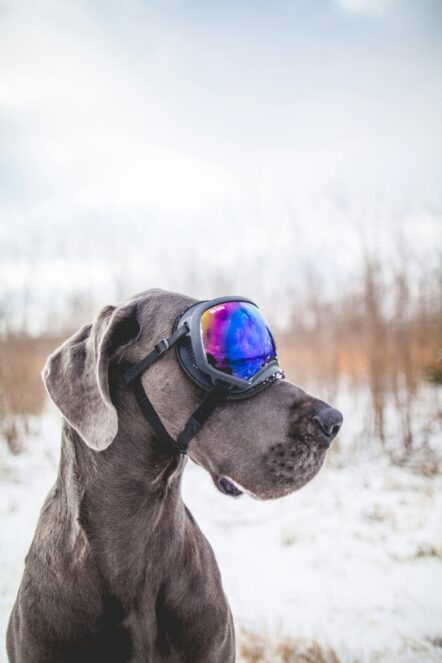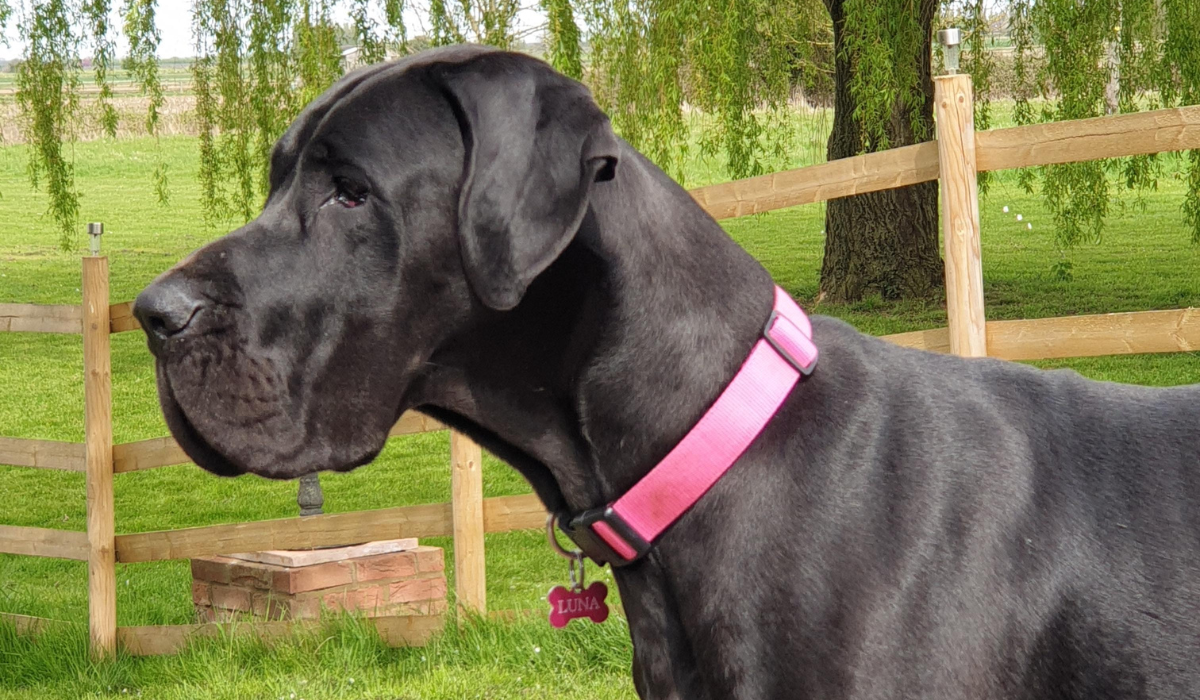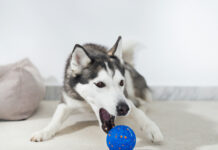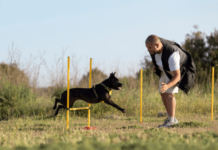Last Updated on February 17, 2024 by Dogs Vets
How Much Exercise Do Great Danes Need? The Answer May Surprise You!
Towering over most other breeds, Great Danes captivate us with their majestic stature and surprisingly tender hearts. If you’re fortunate enough to share your life with one of these gentle giants, their exercise needs might leave you scratching your head. After all, how much activity does a dog the size of a small pony truly require?
Contrary to popular belief, Great Danes aren’t high-octane exercise machines. While they certainly possess bursts of playful energy, their growing bodies have specific needs during their first 18 months.
During this crucial developmental phase, extensive, strenuous exercise can actually harm their growing joints and bones. Think gentle walks, supervised playtime, and sniffing adventures as opposed to marathon runs or vigorous jumps.
As adults, adult Great Danes require a minimum of two hours of exercise daily, but again, intensity matters more than duration. Aim for leisurely walks, swimming sessions, or even brisk games of fetch, allowing them to stretch their legs and engage in moderate aerobic activity. Remember, their massive size means even simple movements burn plenty of calories!
However, tailoring their exercise to their individual needs is key. Consider their age, energy levels, and any joint concerns. Senior Danes might prefer shorter walks with frequent rest breaks, while younger ones might enjoy longer, but still gentle, explorations. Always prioritize their comfort and safety over adhering to a rigid exercise schedule.
Here’s the surprising part: mental stimulation is just as crucial as physical activity for Great Danes. Their intelligence thrives on interactive games, challenging puzzles, and training sessions. Keeping their minds active not only combats boredom but also strengthens your bond and provides valuable mental exercise.
Ultimately, understanding your Great Dane’s unique needs and preferences is the key to unlocking their exercise sweet spot.
Listen to their bodies, prioritize gentle activities, and don’t be afraid to get creative with mental stimulation. By following these guidelines, you’ll ensure your gentle giant stays happy, healthy, and ready for countless adventures by your side.

The Importance of Exercise for Great Danes
Before we dive into the specifics, let’s understand why exercise is crucial for Great Danes. These magnificent dogs have a large frame, which puts them at risk for joint and weight-related issues.
Regular exercise helps to keep their muscles strong, maintain a healthy weight, and prevent the development of common health problems.
Understanding Your Great Dane’s Energy Levels
Every Great Dane is unique, and their energy levels can vary. However, as a general guideline, Great Danes are considered to be a moderate-energy breed. This means they require a balance of physical activity and rest to thrive.
Overexertion can be harmful to their growing bodies, so it’s essential to find the right exercise routine for your furry friend.
Exercise Recommendations for Great Danes
Now that we know the importance of exercise and the energy levels of Great Danes, let’s dive into some exercise recommendations:
Daily Walks
Great Danes benefit from daily walks to stretch their legs and burn off excess energy. Aim for at least two 30-minute walks per day, but be mindful of your dog’s stamina and adjust accordingly.
Mental Stimulation
Exercise isn’t just about physical activity; mental stimulation is equally important for Great Danes. Engage their minds with puzzle toys, obedience training, or interactive games to keep them mentally sharp.
Controlled Playtime
Great Danes love to play, but their large size can make them prone to accidents. Opt for controlled play sessions in secure areas to prevent any mishaps. Fetch, gentle wrestling, or hide-and-seek are great options.
Swimming
Swimming is an excellent low-impact exercise for Great Danes. It helps to build their muscles without putting unnecessary strain on their joints. If you have access to a safe swimming spot, take advantage of it!
Monitoring Intensity
While it’s essential to provide regular exercise, it’s equally crucial to monitor the intensity. Avoid strenuous activities like long-distance running or excessive jumping, as they can be detrimental to your Great Dane’s health.

Conclusion
In conclusion, Great Danes require a moderate amount of exercise to stay healthy and happy. Daily walks, mental stimulation, controlled playtime, and swimming are all fantastic options to keep your gentle giant in top shape.
Remember to always monitor their energy levels and adjust their exercise routine accordingly. By providing the right amount of exercise, you’ll be rewarded with a vibrant and content Great Dane by your side!
Frequently Asked Questions
Can Great Danes live in apartments?
Yes, Great Danes can adapt to apartment living as long as their exercise needs are met. However, it’s important to ensure they have enough space to move around comfortably.
Do Great Danes require a fenced yard?
While a fenced yard is beneficial, it’s not an absolute requirement. As long as you provide regular exercise and monitor their outdoor activities, Great Danes can thrive in various living situations.
Are Great Danes good with children?
Great Danes are known for their gentle and friendly nature, making them excellent companions for children. However, supervision is always recommended, especially with younger kids, due to their large size.
How often should I take my Great Dane for veterinary check-ups?
Regular veterinary check-ups are crucial for maintaining your Great Dane’s health. Aim for yearly visits, but consult with your veterinarian to determine the best schedule based on your dog’s specific needs.
Can Great Danes participate in agility training?
While Great Danes may not be the most agile breed, they can still participate in agility training for fun and mental stimulation. However, it’s essential to choose exercises that are suitable for their size and physical limitations.
Remember, providing the right amount of exercise, mental stimulation, and love will ensure your Great Dane leads a fulfilling and healthy life. So get out there, enjoy those walks, and make unforgettable memories with your gentle giant!
Verified Source References:
- The Great Dane Club of America: https://gdca.org/ – This official breed club website provides comprehensive information on all aspects of Great Dane care, including exercise recommendations for different life stages.
- American Kennel Club (AKC): https://www.akc.org/dog-breeds/great-dane/ – The AKC website offers breed-specific information on exercise needs, including tailored recommendations for large breeds like Great Danes.
- The Association of Pet Dog Trainers (APDT): https://apdt.com/ – This professional organization provides resources on positive reinforcement training methods, which can be a valuable tool for keeping your Great Dane mentally stimulated and engaged.

















